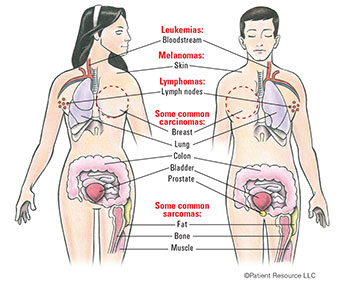
As the number of people suffering from cancer grows, the world is ready to embrace new treatments for cancer. The question to ask is whether there’s any truth to their claims or not.
One of the emerging treatments for cancer these days is hyperthermia. Understanding what this cancer treatment is and what it does can help you decide whether this form of therapy would work for you or not.
What is Hyperthermia?
Fundamentally, hyperthermia means higher than average body temperature. An organic high temperature happens when you’re sick like from heat stroke or with a fever. In this case, however, it refers to deliberately exposing the body to a high temperature to weaken the cancer cells without damaging the healthy cells. It’s more commonly called as thermotherapy or thermal therapy.
How does it work?
When doctors use radiation, they damage the cells in your body equally, so when the cancer weakens, you will feel the weakness too. This is not the case with thermotherapy because it only targets the cancer cells.
The premise it follows is that cancer cells are weak against the effect of heat, unlike your healthy cells. So all you have to do is expose your body heat and then the cancer cells will eventually die.
There are three different suggested ways to implement this treatment:
Local hyperthermia requires heat to be focused on a particular tumor. It’s usually done just below the skin tumors done either through intraluminal probes or interstitial techniques. Intraluminal probes are used for tumors close or in the body cavity while interstitial techniques is used for tumors inaccessible through tubes and applications. Normally, interstitial techniques use needles or probes to direct heat towards hard to reach tumors like brain tumors.
Regional hyperthermia means that the heat will be focused on a larger region of the body, like an entire limb or organ. The approaches commonly used are deep tissue, which uses targeted microwave or radio frequency, and regional perfusion, which requires blood removal, heating then transfusion of the blood back to the patient.
Whole body hyperthermia is used to treat cancer through equipment like thermal chambers spread all over the body.
The US Food and Drug Authority (FDA) has approved the use of hyperthermia, although it’s contingent on the use of radiation therapy as well.
Pros and Cons
Being a recently developed treatment is both a pro and con. It’s a pro because the opportunities, like full cancer cell elimination through local hyperthermia, are endless but it can also be a problem because the techniques involved are new and have not been fully supported by several studies. For example, in local hyperthermia, it’s difficult for doctors to determine the exact temperature of the cell as it’s undergoing the process. To add to that, people don’t all respond to heat the same way, so there’s still a lot of things to discover before people can fully grasp the value and use of this treatment.


